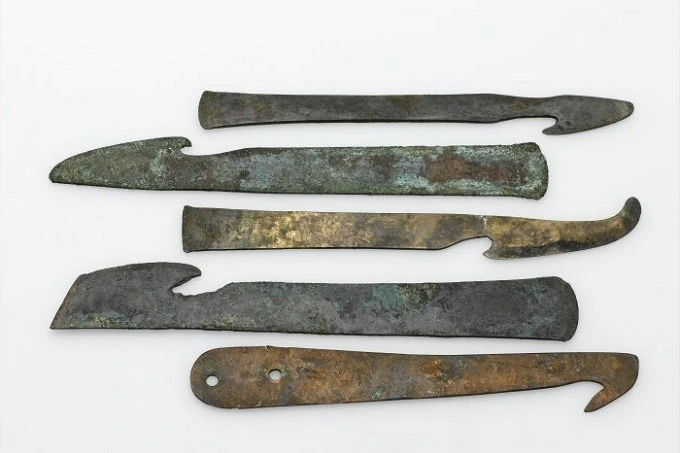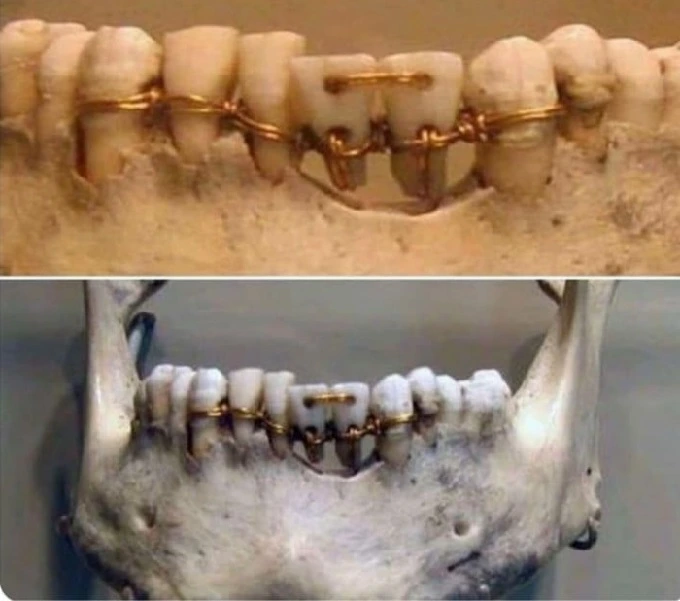Ancient Egyptian medicine and how people were treated in olden day

The ancient Egyptians were well-known for their medicine in antiquity; Homer mentions it in the Odyssey. According to Herodotus, Cyrus, and Darius, monarchs of the Persian Empire had Egyptian doctors. Their renown was well-deserved.
Three key papyri, Ebers, Edwin Smith, and the Kahuna gynecological papyri, provide evidence of ancient Egyptian medicine dating back at least 3,500 years. Many of the papyri’s instructions are similar to current medical processes and include treatments including hundreds of substances.
Diagnostics in ancient time
In 1862, Georg Ebers, a professor of Egyptology at the University of Leipzig, acquired a remarkable document. He determined that it was written about 1500 BC, but that it had been translated from a thousand-year-old original when translating it.
It is written as a reference for medical practitioners and lays out a set of patient-care processes. The doctor was first directed to inquire about the patient’s complaints. The doctor was also obliged to do a physical examination, including examining the patient’s pulse and heartbeat. Third, urine, feces, and saliva have to be studied, which is what contemporary laboratory analysis is all about.
Based on all of this, a prediction with three choices is presented. The doctor determines if it is a curable condition, one that can be battled, or one for which there is no cure. Over 700 medications and spells are included in the remainder of the Ebers papyrus. Due to translation issues, many of the plant constituents are still unknown, yet the translated content deserves respect for the depth of knowledge reflected in 3,500 years of medicine.
Specialization
From the Old Kingdom to the Ptolemies, Egypt had a plethora of medical specialists in various fields. As Herodotus mentions, tomb inscriptions and medical papyri demonstrate that Egypt had neurologists, ophthalmologists, dentists, gastroenterologists, proctologists, and internal medicine experts. Some doctors practiced in multiple fields. Ir-en-akhy was one of the highly skilled physicians. According to his gravestone, he was an ophthalmologist, gastroenterologist, and proctologist.
Other sorts of practitioners were also present. The Ebers papyrus mentions “snwn,” a secular physician’s title, as well as “sau,” a magician, and “wab,” a healing priest’s title. Doctors could treat patients for free if they were paid by the pharaoh. The majority of the healers were from the middle class, and they were paid in cereals and beer, but a few court physicians were from the upper class. Qar is the earliest mummy discovered to date who was a doctor. He lived in 2500 BC, during the Fifth Dynasty. This corresponds to the estimated period of the Ebers Papyrus’ original form, indicating that Qar operated within established medical traditions even at that early date.
It’s also worth noting Imhotep, the builder of King Djoser’s pyramid, was worshipped and evolved into an ideal doctor throughout the years. He may or may not have been a doctor, according to existing evidence. Imhotep’s personality as a physician remained deeply embedded, notwithstanding the period that had passed between his life and the founding of his religion.
Healing of wounds in ancient time
Doctors, similar to current MASH battalions, accompanied the armies on combat missions to treat the injured. In fact, wound care was the subject of the first medical textbooks. Like the Ebers Papyrus, it is thought that the Edwin Smith Papyrus, written approximately 1500 BC, was copied from far earlier Old Kingdom literature (circa 2500 BC).

Fresh meat was applied to simple wounds, which were then sealed with a combination of oil and honey and wrapped with a linen bandage. Honey was an ideal ancient wound dressing because it did not breed bacteria. It was a common ingredient in the Ebers Papyrus’ remedies. Wounds that were more severe but not infected were sewn up.
Finally, drying treatments were employed to clean and dry the wound if it was locally irritated. If the patient developed a fever, indicating that sepsis had set in, the incision was cauterized, thereby eliminating the injured tissue and allowing the patient to recuperate.
Thus, by at least 1600 BC, and perhaps much earlier, the ancient Egyptians had a thorough understanding of the different phases and severity of wounds, and could successfully treat them using available equipment.
The treatment of burns was no less successful. The ancient Egyptians were fully aware of the various stages and severity of wounds and skillfully cared for them with the tools available. Burns were treated no less effectively. The ancient Egyptians were fully aware of the various stages and severity of wounds and skillfully cared for them with the tools available. Burns were treated no less effectively.
Ancient pharmaceutical methods
“Sweet beer yeast” was also a wound treatment, according to the Ebers Papyrus. This is the earliest reported use of yeast as an antibiotic, demonstrating the sophistication of ancient Egyptian medicine. Moldy bread was also one of the numerous antiseptics used in ancient Egypt to heal illnesses. While moldy bread was a dangerous method that did not produce the penicillin of the genus now used as an antibiotic, it did grow a form of penicillin-producing fungus, depending on the type of bread it was cultivated on.
Ancient Egyptian medicine included a wide range of plants and other materials that are now known to have medicinal characteristics. For example, raw garlic was commonly employed because of its high allicin concentration. Keeping asthma under control was only one of its numerous applications.
To treat inflammation and joint discomfort, a combination of willow and myrtle was utilized, which was a forerunner to the usage of salicin in aspirin today. Chickpeas, clover, hemp, endive, iris, mustard, rose, rosemary, thistle, asparagus, eggs, liver, hair, wax, cumin, fennel, aloe, castor oil, and excrement are some of the other plants and minerals that have been employed.
The milk of a lady who had given birth to a son was administered to a patient who had a common cold or other virus-related symptoms. Breast milk, in general, has components such as natural sIgA antibodies that increase immunity, and the sex of the infant didn’t matter, except in terms of placebo.
Disease treatment and artificial limbs
The region was plagued by a variety of eye disorders, including trachoma, which is caused by the bacterium Chlamydia trachomatis. Cosmetics were one strategy for preventing eye infections. Antimony was used to make the eyeliner, and its antibacterial properties are being researched. Similarly, the ancient Egyptians’ favorite green eyeshadow was malachite, which gets its green hue from copper, a potent antibacterial element.
Schistosomiasis is a parasitic infection that was and still is prevalent in Egypt. Antimony was blended with honey by the doctor to treat it. Antimony chemicals are still utilized to treat parasite infection today, which is not unexpected. Finally, the unappealing sea worm is wound around a pole while sticking its head out of the skin, much as it was in ancient Egypt. The Rod of Asclepius, a well-known medical emblem, may be traced back to the Egyptians’ practice.

Around 1500 BC, a girl’s big toe was discovered in a priest’s tomb as the oldest tangible evidence of an artificial appendage. The priest created an aesthetic and practical comparable by replacing his daughter’s toe with a wooden and leather replica.
Contraception and reproductive health
Midwives taught birth control because it was socially and spiritually acceptable. Several prescriptions for injectable contraceptives may be found in the Kahuna Gynecological Papyrus, which dates from 1800 BC. Natron, a sort of salt found in several Egyptian lakes, acacia gum, sour milk, and crocodile droppings were among the components included in the directions. They were all capable of spermicidal action.
Lactic acid was found in sour milk, while saponins were found in acacia gum. Even crocodile droppings, which some current academics consider to be the most effective form of contraception, had an alkaline pH. Modern spermicides have a higher alkalinity component.
Several prescriptions for the treatment of impotence were found in the Ebers Papyrus, and some of the concoctions were effective. Carob, for example, is a popular foodstuff with high histamine levels. Mice with low amounts of histamine have a harder time mating.
The circulatory system is comprised of a number of organs
The heart was at the hub of a network of vessels called “mtw” that carried fluids to other regions of the body in ancient Egypt. Mtw is a transport system that moves air and nutrients from the lungs to the rest of the body. This network was crucial to the body’s health and resembled the cardiovascular system in current times.
The pulse was particularly significant since it conveyed information about the heart’s state. Medical students were taught to use their fingertips to feel for a pulse, which they used to quantify the heart’s function, which included both emotions and thoughts. Thought originates in the brain, as humanity has discovered throughout the years, current language nonetheless links emotion to the heart.
Conclusion
“Powerful is magic mixed with medicine, strong is medicine combined with magic,” the Ebers Papyrus expresses emphatically. Both the doctor and the patient would have total trust in the efficacy of spells, similar to today’s double-blind placebo trials in which neither party knows who is getting the treatment.
The efficacy of a placebo is undeniable in modern trials. The ancient Egyptians did not grasp the circulatory system’s interconnection, despite their knowledge of veins and arteries. Several internal organs, including the brain, were unknown to them. Because they were frequently based on mythological connections or sympathetic magic, many of their remedies appear to be completely incorrect.
Physicians, on the other hand, created many successful remedies for people’s ailments using an empiric reasoning process and a rigorous diagnostic technique. Their medical accomplishments are amazing in general, but they are no less effective for those times.




